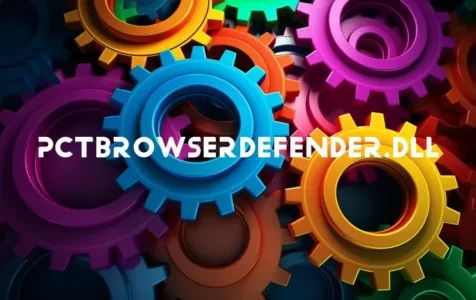The PCTBrowserDefender.dll file is a dynamic link library (DLL) component closely associated with the Browser Defender and Browser Guard programs developed by Threat Expert Ltd, although it is often seen under the umbrella of PC Tools, a subsidiary known for providing internet security tools. This DLL file is a Browser Helper Object (BHO) specifically targeted for use with Internet Explorer, where it functions as an add-on to deliver security information about websites during web searches. Upon searching the internet using Internet Explorer, this BHO is designed to indicate the safety or potential danger of websites, providing users with a safety rating alongside search results.
Is PCTBrowserDefender.dll Safe?
Under normal circumstances, the PCTBrowserDefender.dll process is a legitimate and safe component of certain security software suites. It is a signed file, meaning it has been authenticated by Verisign, a recognized Certificate Authority. This authentication implies that the file is not inherently malicious.
However, its safety can only be guaranteed if the DLL file originates from the authentic vendor. Often, malicious programs mimic the names of legitimate files to cloak their activities. Hence, the true safety of the PCTBrowserDefender.dll file on your system can only be established by verifying its location and digital signature. Typically, you can find PCTBrowserDefender.dll in a subdirectory of “C:\Program Files (x86)”, which is a standard directory for these types of software components.
Could It Be a Virus or Malware?
The potential for PCTBrowserDefender.dll to be a virus or malware arises if the file has been hijacked or impersonated by malware creators. For instance, users might encounter issues wherein security programs like McAfee, Windows Security Essentials, or Windows Defender unexpectedly disable themselves, and it is found that Browser Defender Toolbar or similar BHOs are present on the system. These issues could indicate a security breach by malware posing as legitimate security components.
Expert Tip: For smoother PC performance, consider using a PC optimization tool. It handles junk files, incorrect settings, and harmful apps. Make sure it's right for your system, and always check the EULA and Privacy Policy.
Special offer. About Outbyte, uninstall instructions, EULA, Privacy Policy.
Common Issues Associated with PCTBrowserDefender.dll
One of the most common issues reported by users is the BHO causing sluggishness or errors due to being outdated or faulty. Further, its ability to monitor web browsers may raise privacy concerns. Moreover, some users have reported their system behaving erratically after mistakenly downloading a file they believed to be video content, leading to the dysfunction of antivirus programs and Windows updates.
How to Fix These Issues
To address these concerns, typically one would:
1. Check the location and signature of the file:
– Open Task Manager and locate the PCTBrowserDefender.dll process.
– Verify that the file is located in the correct directory and that it’s signed.
2. Run a virus and malware scan:
– Use reputable security software to scan your system for infections.
3. Uninstall or remove the problematic BHO:
– If PCTBrowserDefender.dll is identified as harmful or unnecessary, you can uninstall it via the Control Panel under “Programs and Features.”
– You should also check the Windows Registry for any remaining entries of the Browser Defender Toolbar and clean them, but only if you’re comfortable doing so or under the guidance of a professional.
4. Keep your system clean and protected:
– Make sure to keep your operating system and all your software updated.
– A tidy computer with regular periodic backups and restore points can prevent a lot of PC trouble.
5. Use the System File Checker tool:
– The SFC /scannow command can be used to scan for and restore corrupted system files.
6. Seek additional help if needed:
– If you’re not confident in handling the issue, especially matters involving the registry, seek assistance from tech forums or professional services.
In conclusion, while PCTBrowserDefender.dll is a legitimate file as part of the PC Tools Internet Security suite, it has the potential to be mimicked by malware. Users should verify the authenticity of the file present on their systems and remain vigilant against any unusual system behavior that might suggest an infection. Regular maintenance and security scans can help keep your computer safe from threats associated with this file.
